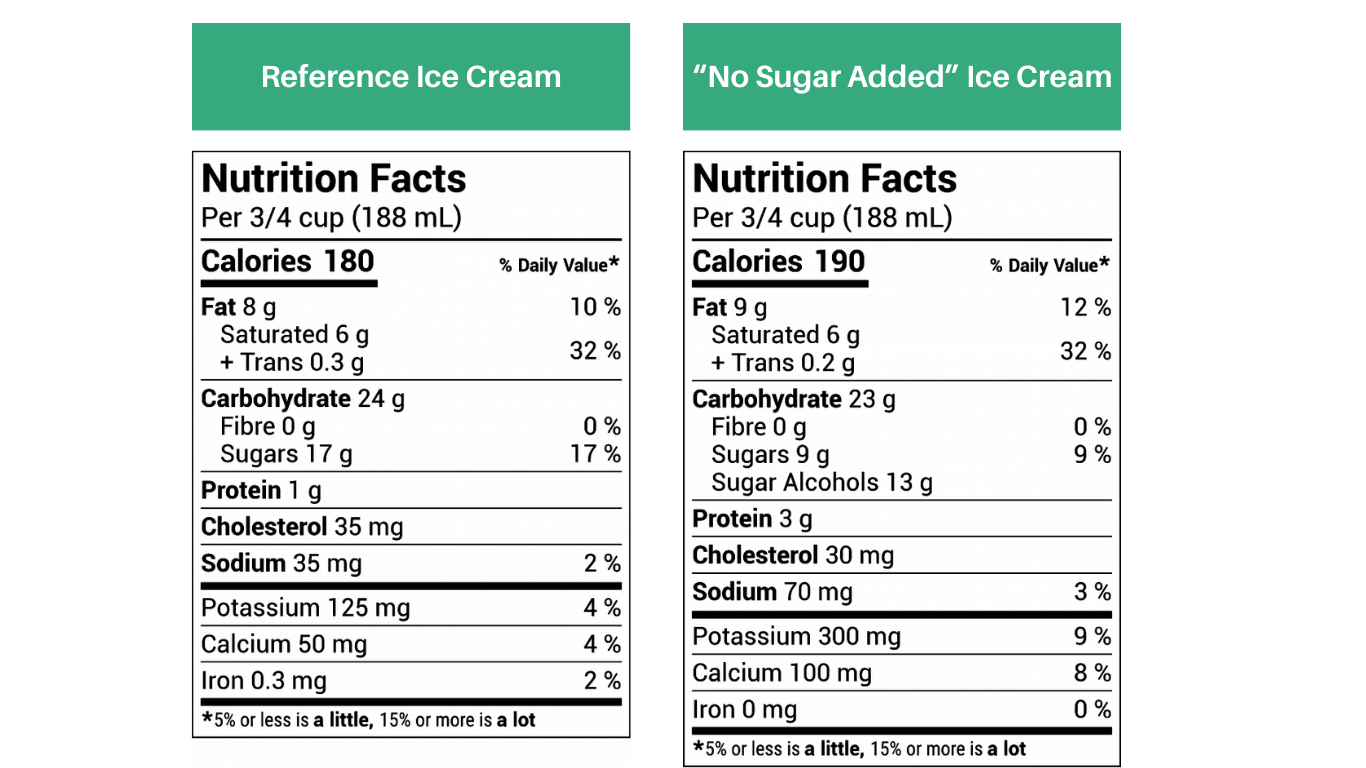Sugar (sucrose) is best known to provide sweetness to foods. However, sugar is a versatile ingredient and contributes many functional properties to food products.
- Flavour Balance. Sugar adds sweetness, and balances acidic and bitter flavours in tomato and vinegar-based sauces, dressings and brines;
- Preservation. Sugar stops bacteria from growing and delays spoilage.
- Texture and Mouthfeel. Sugar helps provide the soft structure in baked goods and the smoothness in frozen dairy products;
- Volume. Sugar adds volume to different products, and that allows them to be tall, fluffy, or soft.
- Colour. Sugar reacts with heat (caramelization) or with heat and proteins (Maillard reaction) to create a golden brown colour in baked goods and sauces.
- Taste. A little bit of sugar can make high-fibre foods taste better.
- Challenges in Sugar Replacement and Reformulation. While some functions can be replaced by other ingredients, others are unique to sugar. Because there is no single universal sugar replacer that can be used in every application, it can often be a challenge to reduce or remove sugar in some recipes.
Six Main Roles Sugar Plays in Foods:

Roles Sugar Plays in Different Food Categories:
| Functions | Cereals | Beverages | Baked Goods | Cakes, Cookies | Jams, Jellies | Puddings and Sauces | Confections | Dairy | Frozen Desserts |
|---|---|---|---|---|---|---|---|---|---|
| Improve palatability | |||||||||
| Texturizer | |||||||||
| Tenderizer | |||||||||
|
Colour and Flavour
|
|
|
|
||||||
| Solubility | |||||||||
| Freezing Point | |||||||||
| Boiling Point | |||||||||
|
Preservative
|
|
|
|
||||||
| Fermentation | |||||||||
| Sweetener |
Want to see sugar in action? Watch as Chef Claire Tansey demonstrates the various roles sugar plays in:
Quick-pickled Carrots (flavour, texture)
Caramel Salmon with Puy Lentils (caramelization)
Genoise Cake with Buttercream Icing (texture, boiling point increase)
Challenges in Sugar Replacement and Reformulation
Sugar plays many roles in foods. While some can be achieved with other sweeteners, certain functions are unique to sugar. This can make it difficult to reduce or remove the amount of sugar in certain recipes. If you are trying to reduce the amount of sugar in a home recipe, it is best to experiment by reducing the amount used by small increments and see if the taste, texture, and colour remain to your preference.
Due to the multiple functions sugar plays in foods, to reduce or remove sugar from a product is not a simple exchange of one ingredient with another. Furthermore, depending on the replacement ingredients (e.g. starches, dextrins) total calories may not be lower than the original product. The reformulated product will typically have more ingredients on the ingredients list, some of which may not be recognized by the general consumer and will typically include additives, such as gums, thickeners, or bulking agents. Based on recent research at the University of Toronto comparing the nutrition composition of Canadian foods and beverages formulated to be lower in sugars, “the reduction in sugar was at least partially being offset with an increase in starch”. Overall, there was no change in the calorie content among lower-sugar products.
For example, the "No Sugar Added" ice cream below has 50% less sugars, but is slightly higher in fat and total Calories as compared to the reference “regular” ice cream. Based on its List of Ingredients and Nutrition Facts table, this "No Sugar Added" ice cream is sweetened with sucralose and a sugar alcohol (maltitol, 13 grams per 3/4 cup of ice cream).

For more information, additional resources include:
- Infographic - Sugar Beyond Sweetness
- Fact Sheet - Frequently Asked Questions: Functional Roles of Sugar
- Carbohydrate News - Beyond Sweetness: The Functional Roles of Sugar in Foods and the Challenges in Replacing/Reducing It
- Webinar presentation slides - Beyond Sweetness: The Functional Roles of Sugar in Foods and the Challenges in Replacing/Reducing It
- Webinar video - Beyond Sweetness: The Functional Roles of Sugar in Foods and the Challenges in Replacing/Reducing It - Presented by Dr. Douglas Goff (University of Guelph) and Dr. Julian Cooper (University of Reading)
Recent news items include:
- July 2023 - Lack of Calorie Reduction in Breakfast Cereals and Bakery Products with Sugars Claims in Canada
- August 2022 - Reading Food Labels: New Changes to Sugars-Related Claims
- January 2018 - Does Reformulation and Product Innovation Result in a Healthier Food Supply?
- November 2017 – Are Foods and Beverages Reduced in Sugars Also Reduced in Calories?
- October 2015 - Why Sugar Is Added to Food: Food Science 101
References
- Goldfein KR, Slavin JL. Why Sugar is added to foods: Food Science 101. Comprehensive Reviews in Food Science and Food Safety. 2015;14:644 – 656.
- Cooper JM. Product Reformulation – Can Sugar be replaced in foods? International Sugar Journal. 2012;114:1365.
- Bernstein J, Christoforou AK, Weippert M, L’Abbe MR. Reformulation of sugar contents in Canadian prepackaged foods and beverages between 2013 and 2017 and resultant changes in nutritional composition of products with sugar reductions. Public Health Nutr. 2020;23(16):2870-78.


